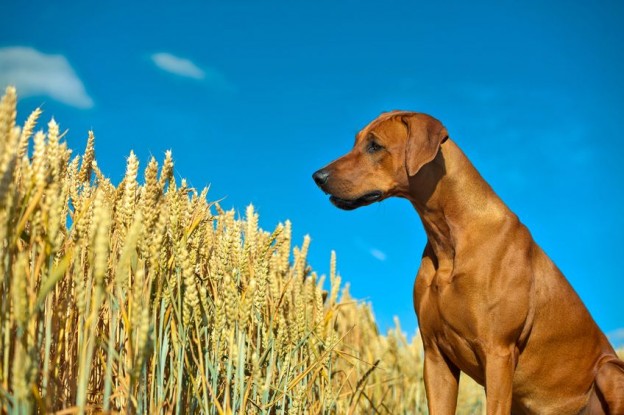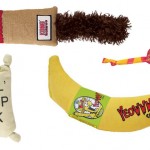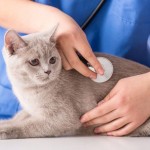Last updated: December 6th, 2018
In recent years, there has been an increase in the number of pet food brands selling grain-free pet food. This appears to follow the trend towards healthy human foods, and more pet owners are trying to ensure their pet eats as well as they do. In this latest blog article, we look at whether grain-free pet food is beneficial for your cat or dog, or is it just marketing hype?
What is grain?
First of all, let’s look at what grain is. Grain refers to the seeds of various grasses cultivated for food. Common grains include barley, corn, millet, oatmeal, oats, quinoa, rice and wheat.
A grain seed has an outer layer called the bran, which is a good source of fibre and also contains vitamin B. The inner portion is called the endosperm, and contains starch (carbohydrates) and proteins. The grain seed also contains the germ, which is a good source of nutrients such as folic acid, vitamin E, and minerals.
When you see wholegrain mentioned, this refers to the complete seed. When grains are refined, the bran and germ are removed leaving just the endosperm, which is mostly carbohydrates. This means that wholemeal grain is better for you (and your pet) as it contains fibre and nutrients in addition to carbohydrates.
Not all grains are the same though – it depends on whether they are processed, and also the type of grain. Some (such as quinoa) are high in protein, while other grains are high in fibre. Grains can also provide essential nutrients, for example corn contains linoleic acid which is an essential fatty acid for dogs. An essential fatty acid is a fatty acid that an animal must ingest, as its body cannot create it naturally.
Natural diets
One of the arguments for feeding your pet grain-free food is that their natural (ancestral) diets don’t include grains. This isn’t strictly true though, and both cats and dogs can benefit from a certain amount of grain in their diet.
Cats are what is known as obligate carnivores, which means that protein and fat from meat is their primary energy source. While you won’t find cats eating raw grain from fields of crops, they do eat prey that are herbivores. Typically these animals will have stomachs full of partly-digested plant and grain material, which the cat will digest.
While dogs have many physical traits of carnivores, they can survive on diets that don’t contain meat. Some people point to the natural diet of wolves in the wild, and believe that dogs should follow that diet, however it is not proven conclusively that dogs descended from wolves. Also, over many thousands of years, dogs have evolved to have certain omnivore traits as they have become domesticated, and now have the ability to digest grains and vegetables.
Also, dogs who scavenge will tend to eat fruit and vegetables from off the ground, so these will usually be ripe and starting to decay which makes them easier to digest.
Both cats and dogs lack an enzyme in their saliva called amylase, which helps break down carbohydrates. However this enzyme is secreted by their pancreas, so they are able to digest carbohydrates from grains albeit not as efficiently as some other animals. Their digestive tracts are also shorter than those found in herbivores, which also reduces their efficiency at digesting carbohydrates.
It is thought that a cat’s natural diet will contain around 5% carbohydrates, and a dog’s will contain 15-25% so an ideal food will have similar percentages.
The grains you find in most pet foods are soluble carbohydrates which have been cooked or extruded to make them more easily digestible. Soluble carbohydrates are the starchy portion of a plant that can be most easily digested, and are found in high concentrations in cereal grains like rice, wheat, corn, barley and oats.
Food allergies
Some people claim that grains in pet food are responsible for food allergies in their pets. While some pets are allergic to certain grains, these cause a very small percentage of allergies. Research has shown that the majority of pet food allergies are caused by beef and dairy products, while corn is one of the least common causes.
Some pets can also be intolerant to certain foods – the difference between an allergy or intolerance is the symptoms. An allergy may result in itchy skin, other skin problems, weight loss and lack of energy. A food intolerance may give symptoms like vomiting, diarrhoea or stomach upset – similar to how we can react after a spicy curry.
Marketing ploy or real benefit?
The answer is a bit of both. While some pets do benefit from a grain-free diet, this is only a small percentage. The majority of cats and dogs will benefit from having grain in their diet, as long as it’s a good quality food that doesn’t rely on using poor quality grains as a cheap filler.
In many cases, gram for gram, nutritious grains such as corn contain more nutrients than the ingredients that are typically used to replace them. In addition, grain-free does not mean carb-free. Typically, ingredients like apples, potatoes and peas are used to replace grains, and these can contain more carbohydrates than grain.
The most important thing is that the food provides a good quality, balanced and compete diet which includes all the nutrients your pet needs.
When to avoid grain
As you can see, there are reasons why in the majority of cases, grains should not be excluded. Grains contain antioxidants, energy-rich carbohydrates, nutrients and fibre which promotes healthy digestion – all of which are good things.
However a food that has too much grain will not be good for your pet. Cheaper foods will use low-cost grains as a filler, so the food will be high in carbohydrates, and more difficult for your pet to digest efficiently. You should try to avoid pet foods that list grains as the first ingredient, and look for foods that list a good quality protein source as the primary ingredient.
Also, while food intolerances caused by grain are rare, it is possible that your pet is allergic to them. Therefore if your vet advises that you should avoid feeding them grain, then a grain-free food is the best option.




